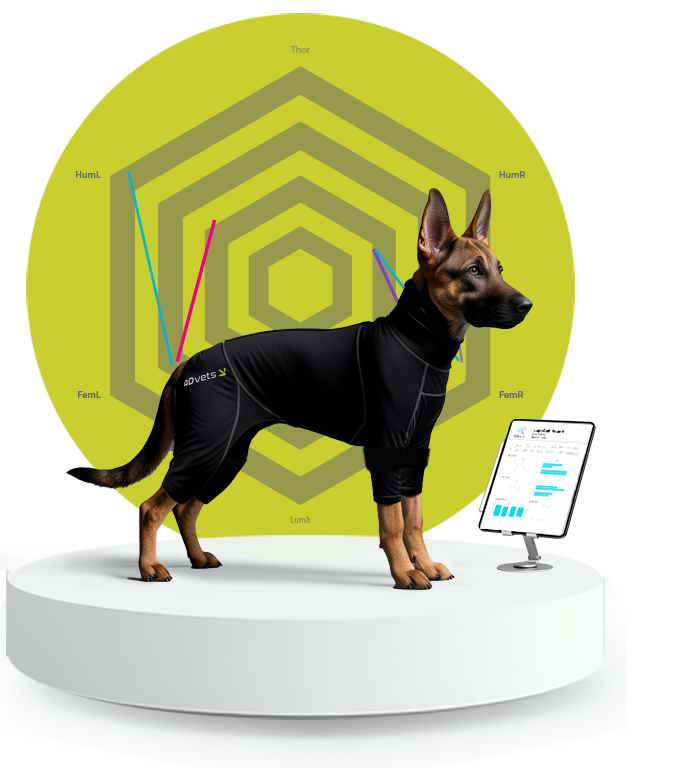
LupoGait case studies
Practical insights into gait analysis
Case studies on gait analysis with LupoGait
Real-life application examples for precise diagnostics and treatment planning
Our LupoGait case studies offer you detailed insights into the application of our technology for various orthopaedic challenges. Using real examples, we show how precise gait analysis contributes to the early detection of movement disorders and supports individual therapy approaches. Discover how LupoGait is used in practice to sustainably improve the mobility and quality of life of dogs.
You can find out more about gait analysis in dogs here:
LupoGait case study
Functional asymmetry in a German Wirehaired Pointer
Diagnosing musculoskeletal problems in working dogs is both difficult and important. This 2.5 year old pointer presented with recurrent lameness in the left forelimb that spread to the right side.
Important findings
Asymmetry of the gait pattern: the left forelimb showed a gait close to the toes and an imbalance of the elbow; the right compensates for this with greater movement
Postural analysis: Weight shifted to the right, left shoulder turned inwards, shoulder blade stretched outwards
Muscle imbalance: Lower muscle mass on the left scapula contrasts with stronger muscles on the right side
Functional asymmetries, which are often only subtle, can significantly impair mobility and health. Instruments such as gait analysis enable precise diagnostics that ensure targeted interventions and optimal performance without long-term damage.
LupoGait case study
Persistent lameness in a working dog
A 3.5-year-old Cane Corso was presented with recurring lameness and restricted mobility, despite previous treatments such as cruciate ligament surgery and drug therapy.
Important findings
Gait pattern
Clear irregularities of the forelimb and compensatory overloading of the right forelimbTight position of the hind limbs with pelvic twist, which would not have been recognized so clearly without this detailed analysisDifferent shoulder positions with limited mobility
Therapeutic approach (correction of biomechanical dysfunctions)
Repositioning of the limb and manipulation of the spineRestoration of symmetry and improvement of dynamics
Result
Visible improvement in the quality of movement Reduction in lameness and stabilization of the gait pattern
More case studies
LupoGait in practice: precise diagnostics, visible results
What do these case studies show us?
The LupoGait case studies presented illustrate how precise gait analysis contributes to the early diagnosis and targeted treatment of movement disorders. With LupoGait, even subtle deviations in gait that are often invisible to the naked eye can be detected.
The objective data from LupoGait enabled the right therapeutic decisions to be made in both cases, leading to a visible improvement in the dogs’ mobility and quality of life.
How can LupoGait support you?
LupoGait not only provides valuable data for diagnostics, but also helps you to monitor the success of therapy and adapt treatment plans in a targeted manner. Easy integration into everyday practice makes LupoGait the ideal tool for vets, physiotherapists and research institutes.
Would you like to see LupoGait in action?





